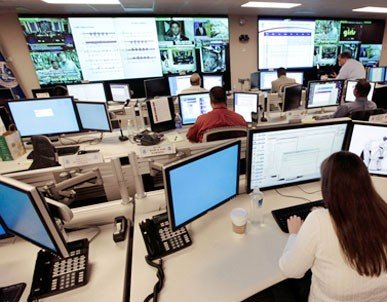What is remote hardware monitoring?
 Many businesses have become accustomed to a managed services approach to tech support as far as software monitoring and maintenance is concerned. To some, however, it may come as a surprise that the internet can also be used as a conduit for hardware-based information as well. Remote hardware monitoring is now a business reality that is helping small and medium-sized companies to reduce their overall technology maintenance costs.
Many businesses have become accustomed to a managed services approach to tech support as far as software monitoring and maintenance is concerned. To some, however, it may come as a surprise that the internet can also be used as a conduit for hardware-based information as well. Remote hardware monitoring is now a business reality that is helping small and medium-sized companies to reduce their overall technology maintenance costs.
With complete system monitoring done on a remote basis, companies need no longer employ in-house staff to perform these tasks. This immediately creates a cost reduction – not just of salary, but of associated costs such as employee benefits and unemployment taxes. Another source of savings, however, has to do with the hardware itself. In many cases, small businesses could not afford a single individual to monitor hardware; this task was assigned to a worker whose plate was already full. The inevitable result of such a system is that hardware needs are neglected to some degree, even when system alerts have been properly set up.
Over time, overheating hardware becomes inoperable, leading to high replacement costs. With a remote monitoring system in place, automated system notifications are noticed at once by highly trained and qualified remote staff who know how to respond. This setup means that hardware is likely to last longer since it is not left to languish in a state that can cause damage.
System alerts in a remote hardware monitoring model
Remote hardware monitoring provides the technology company providing services with continuous data about a number of issues including not just the temperature of each target machine, but also the voltages flowing through the system, the current power levels, and the pulse-width modulation experienced by cooling fans.
Automated system alerts are an integral component of hardware monitoring. Whenever one of the key values exceeds acceptable limits, remote staff are notified at once so that appropriate system modifications or other needed actions can be taken.
Most remote monitoring solutions use a TCP/IP protocol to transfer information over the internet.
Great Lakes Computer’s NEMS Remote monitoring for IBM AS400
NEMS/400 constantly monitors your hardware and reports any problems so Great Lakes Computer Corporation can be there before they happen. NEMS/400 was created to allow GLC to offer the same “comfort factor” that IBM is able to leverage as a major player in the AS/400-iSeries maintenance market place. This service provides complete system monitoring, automatic alerts and customer notification for all of your AS/400 and iSeries products.
Service details:
-
- NEMS/400 is designed to monitor the AS/400 or iSeries system error-log and report problems automatically based on some custom filters.
- Automatically receive and redirect messages to service centers and field engineers via e-mail or text.
- The Problem Management Center (PMC) logs and archives all calls.
- The PMC is installed on a “central site” AS/400 or iSeries.
- Connection between the customer’s machine and the PMC is made by either IP (using the Internet) or a dial up system using an asynchronous modem attached to a V24 port.
- Detailed archived problem message logs allow report production based on machine, client, date, history, number of problems and more.




